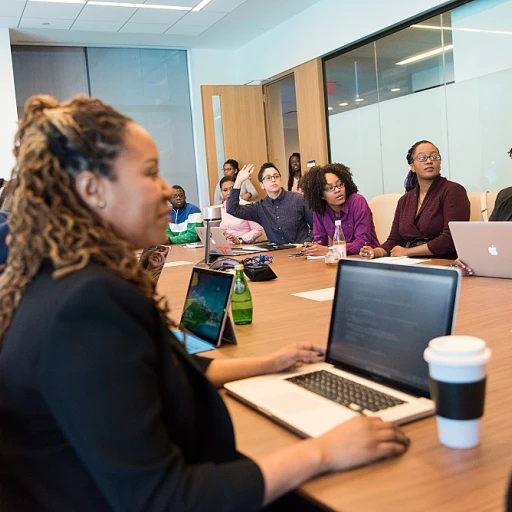Understanding the Role of Risk Response in Change Management
Grasping the Importance of Risk Response in Change Initiatives
In the fast-paced world of project management, risk response is not just a component; it is a critical element that paves the way to achieving successful outcomes. While undertaking project initiatives, the potential for encountering various risks is inevitable. Understanding how to effectively navigate these risks can make a significant difference in the project's trajectory, ensuring that objectives are met without unnecessary setbacks.
Project managers today are tasked with the responsibility of not just identifying potential risks but also devising robust response strategies that are both proactive and reactive. This involves creating a dynamic risk register that evolves as the project progresses. The management plan should incorporate clear risk identification and assessment processes, enabling the project team to respond swiftly and effectively.
The risk management process entails a thorough analysis to assess the impact and likelihood of risks. It requires a collaborative effort where team members and stakeholders engage in risk mitigation discussions. The planning and execution of a response plan calls for dedicated time and training, ensuring that every team member is equipped to tackle potential risks head-on.
Effective risk response is often indicative of a project team's competence and preparedness. These skills are frequently honed through continuous risk assessment, which allows the team to adapt and refine their strategies as new risks are identified. This ensures resilience and adaptability, key traits in sustaining project momentum and achieving long-term objectives.
Setting the Stage: Preparing for a Productive Working Session
Preparing Your Team for Effective Risk Response
To ensure a productive working session focused on risk response, it's essential to establish a comprehensive foundation. This preparation phase sets the tone for effective collaboration among project team members, fostering an environment where potential risks are addressed with informed, actionable strategies. Here are key actions to consider:
- Identify Key Stakeholders: Before diving into the session, project managers need to recognize the primary stakeholders involved. These individuals bring valuable perspectives and insights, contributing to the development of effective risk response strategies. From project risks to potential risk impact, each stakeholder offers crucial input for a thorough risk assessment.
- Conduct a Risk Identification Process: The heart of effective risk management lies in thorough risk identification. Utilize tools such as the risk register and ongoing risk analysis to pinpoint potential risks that could impact project outcomes. Including all team members in this process ensures a comprehensive understanding of the risks at hand.
- Plan for Comprehensive Training: Equip your team with the necessary skills and knowledge through targeted training sessions. A well-prepared team can enhance the effectiveness of risk response plans, leading to proactive mitigation strategies that address project risk efficiently. This training ensures team members are well-versed in both the theory and practice of risk management.
- Set Clear Objectives for the Session: Clearly delineate the session’s objectives to keep discussions focused and productive. These objectives should align with the broader goals of your change management efforts, ensuring that risk response is integrated into the overarching management plan.
Through meticulous preparation, the project management team increases the likelihood of developing successful risk responses. This involves time investment and dedication from all stakeholders but ultimately yields a robust framework for risk mitigation and project success.
Key Metrics for Assessing Risk Response Effectiveness
Quantitative Measures for Risk Responses
In the intricate world of project management, a comprehensive risk assessment often begins with identifying potential risks and assessing their probable impact. By employing quantitative metrics, project managers can precisely evaluate the efficacy of their risk response strategies. This ensures the chosen mitigation plans align with the project objectives and provide measurable value.
When assessing risk response effectiveness, key metrics play a crucial role. These metrics not only illuminate the project risks but also guide teams in refining their strategies. Here are some metrics to consider:
- Probability and Impact Scores: This establishes the likelihood of a risk occurring and its consequential impact on the project. Once identified, the project team can prioritize risks based on these scores.
- Time to Mitigation Implementation: Measuring the time taken to implement a risk response can indicate the team’s readiness and agility in handling unexpected challenges.
- Cost of Risk Responses: Evaluating the budget allocated for mitigation activities versus the actual expenditure can reveal the cost-efficiency of the response plan.
The success of these assessment metrics depends on effective risk identification and analysis processes. Collaboration among all stakeholders ensures that potential risks are not overlooked. Consistent training sessions are vital for the project team to stay adept in dynamic risk management practices.
Moreover, a dynamic risk register keeps track of identified risks, response strategies, and their outcomes, allowing project managers and team members to make informed adjustments. Documenting these findings provides a transparent overview, laying the groundwork for iterative improvements.
Facilitating Open Dialogue and Collaborative Problem Solving
Open Dialogue as a Catalyst for Risk Strategy Formulation
Creating an environment where open dialogue flourishes is pivotal in fostering effective risk responses. When a project team gathers to tackle risk assessment, encouraging open communication becomes the catalyst for unlocking innovative solutions. This transparent approach enables team members to actively participate in the risk management process and contribute their unique perspectives to risk identification and mitigation strategies.
Engaging the right stakeholders early in risk discussions ensures that diverse insights are collected. A well-structured session invites the project manager to skillfully facilitate conversations, ensuring every voice is heard. By embracing these interactions, project managers can uncover potential risks, understanding the nuances of each risk through the diverse lenses of their team.
Collective problem solving should not be limited to the discussion phase. It is vital to incorporate solutions directly into the response plan. The project team should deliberate on viable response strategies, evaluating their potential impacts on the overall project objectives. As they do so, remember that risk is dynamic, necessitating adjustments to the response plan as new information arises.
A dynamic approach to dialogue gives life to the project risk register. Frequent updates and collaborative contributions ensure it remains an accurate reflection of the current project landscape, enabling swift and effective risk responses. By fostering this open dialogue, organizations create a robust risk management framework, one that is not only reactive but also proactive in navigating uncertainty.
Documenting Findings and Implementing Improvements
Turning Insights into Actionable Steps
Documenting the findings from a project team’s working session is a critical step in bolstering the effectiveness of risk response strategies. The process of converting insightful discussions into tangible actions involves several key steps.
To begin with, comprehensively recording the insights and agreements reached during the session helps ensure that all aspects of risk identification and mitigation are addressed. Utilizing a standardized format for documenting risk responses allows project managers to maintain consistency and clarity across the board. This is where the management plan and risk register come into play, serving as essential tools to catalog the project's potential risks and their corresponding response strategies.
Next, delineating specific responsibilities can enhance accountability among team members. Well-defined roles ensure that individuals know their part in implementing the response plan, which streamlines the execution of risk management activities. This structured approach enables the project team to focus their efforts, reducing the potential for overlapping tasks or omissions.
Moreover, assigning clear timelines for each intervention is crucial for maintaining momentum. Establishing deadlines helps prioritize actions and ensures timely risk mitigation, thereby decreasing the impact of potential issues. Project managers are advised to integrate regular checkpoints to assess progress, allowing for adjustments to the response strategies if necessary.
Engaging stakeholders in this documentation process is also vital. Their insights and perspectives can enrich the understanding of risks and the feasibility of the proposed responses. Stakeholder involvement not only aligns the project's goals with broader organizational objectives but also fosters a more collaborative atmosphere for addressing challenges.
In conclusion, capturing findings from risk analysis and working sessions enables project teams to effectively respond to risks by establishing a clear, actionable framework. This ensures that the project management process remains agile and adaptive to emerging challenges, paving the way for continuous improvement and sustained success.
Evaluating Long-term Impact and Continuous Improvement
Measuring Success and Continuity
In the realm of change management, assessing the long-term impact of risk responses is integral to ensuring ongoing progress. It's essential for project managers and teams to periodically revisit their risk management plans to evaluate the efficiency of the strategies implemented. This continuous improvement process allows for a dynamic approach to risk mitigation and supports the adaptability necessary in ever-changing project environments.
A key element in this evaluation process involves monitoring the outcomes against the initial objectives set during the project. This can be achieved through regular analysis of key performance indicators (KPIs) that were identified in the planning stages. By scrutinizing these metrics, the team can gauge whether the risk mitigation measures have adequately addressed potential issues or if further adjustments are needed.
Promoting a culture of feedback within the project team also plays a pivotal role. Encouraging team members and stakeholders to share their observations about the risk responses enables the identification of blind spots and areas for development. Moreover, this open dialogue can reveal insights into the unforeseen consequences of risks that were not accounted for in the initial risk assessment.
Training sessions and workshops can be beneficial in equipping project teams with updated knowledge and skills necessary for effective risk identification and mitigation. By prioritizing skill development, teams can become adept at anticipating risks and crafting innovative response strategies.
In summary, a proactive assessment of the implemented strategies, combined with a commitment to continuous improvement, ensures the project remains aligned with its objectives. This iterative process not only enhances the resilience of the project against emerging risks but also empowers project managers and their teams to drive successful outcomes over time.












